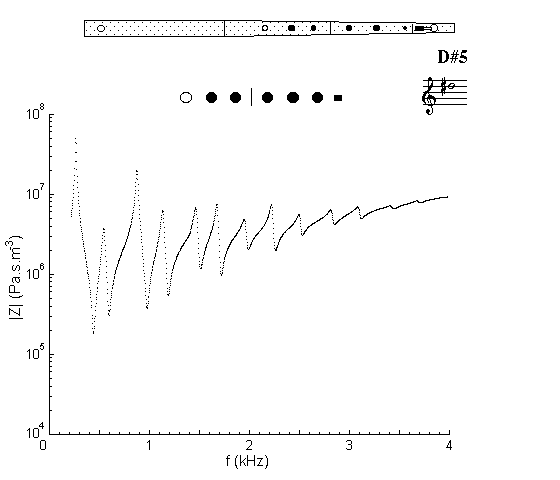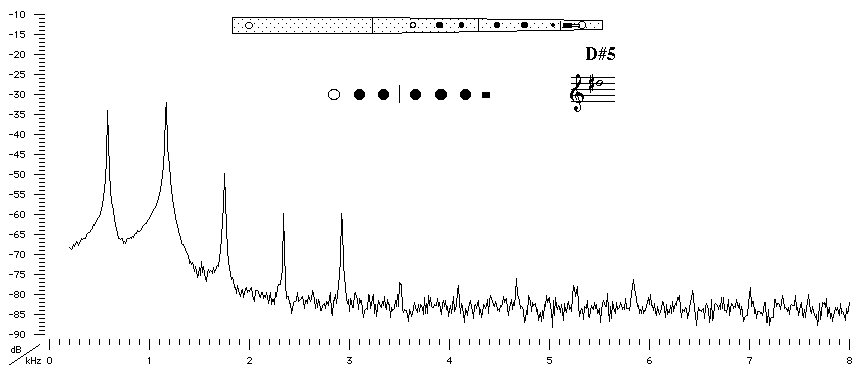| Acoustics of baroque, classical and modern flutes |
baroque flute |
D#5 and Eb5 |

|
Acoustic and Fingering Schematic Non-specialist introduction
to acoustic impedance |
This fingering is comparable to that for D#4 except for the open register hole. This creates a pressure node (or flow antinode) at the midpoint of the pipe, and thus allows D#5 but not D#4. Compared with the D#4 impedance spectrum, the low frequency minima are less deep, and at considerably higher frequency. The open hole acts as a register hole. For more detail on register holes see the section in the introduction to flute acoustics. Because there is only one open hole downstream, the tone hole filter effect is small. The 2nd and 4th minima (the 2nd and 4th harmonics of D#4, or the 1st and 2nd of D#5) are deep and harmonically related (frequencies 1:2:3), so they lead to strong 1st and 2nd harmonics in the sound spectrum, and thus to a bright timbre. (The weak 1st, 2nd and 5th minima can be considered as extreme cross fingerings in which C# is flattened a long way.)

Sound spectrum
of a baroque flute played using fingering for D#5.
![]()
![]()
![]()
![]() You can hear D#5
played by Matthew Ridley.
You can hear D#5
played by Matthew Ridley.
| Acoustic measurements are available for these flutes - modern B, modern C, classical C, classical D, classical flared, baroque Sound clips are available for modern B, classical flared and baroque |
To compare flutes, it is easiest to open a separate browser window for each instrument. |